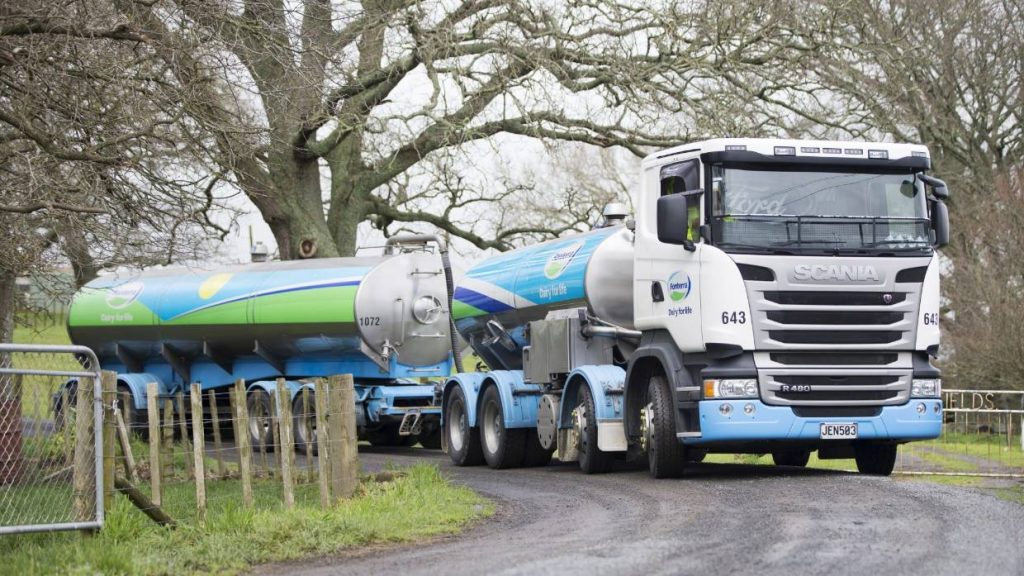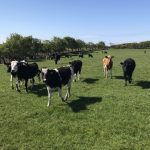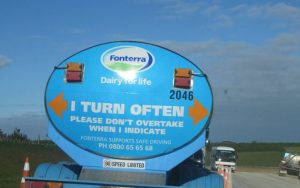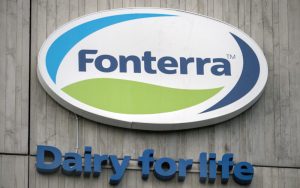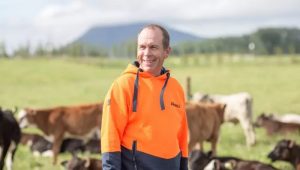
But the dairy co-operative said the report was riddled with inaccuracies, and overlooked New Zealand’s status as one of the lowest emission dairy producers in the world.
In Milking The Planet: How Big Dairy is heating up the planet and hollowing rural communities, the Institute for Agriculture and Trade Policy said Fonterra’s export-led strategy had led to rising emissions and an economic crisis for New Zealand’s dairy producers.
Emissions from New Zealand’s agricultural sector had risen by 12 per cent since 1990 with the doubling of its dairy herd and a 600 per cent increase in fertiliser use, according to Shefali Sharma, report author and European director at IATP.
About 95 per cent of New Zealand’s milk was exported, largely through Fonterra, the world’s second largest dairy processor and one of 13 dairy giants criticised in the report for producing combined greenhouse gas emissions on a par with the United Kingdom.
“Even as governments signed the Paris Agreement in 2015 to significantly rein in global emissions, these companies’ increase of 32.3 million tonnes of greenhouse gases equates to the pollution stemming from 6.9 million passenger cars driven in one year,” Sharma said.
“Some dairy companies increased their emissions by as much as 30 per cent in the two-year period.
But unlike fossil fuel companies, which were subject to growing public scrutiny, there was little pressure for meat and dairy corporations to be held accountable for their emissions.
Fonterra director of global sustainability, Carolyn Mortland, said the report contained several inaccuracies.
“We view it as a missed opportunity for real dialogue about solutions to climate change and creating a sustainable future for everyone.
“For example, the Fonterra emissions are significantly over reported at 44 million tonnes of C02-equivalent rather than 22 million tonnes.”
In contrast, a comprehensive and peer-reviewed report released earlier this year said the carbon footprint of New Zealand’s on-farm milk supply was less than one-third of the global average and up to 30 per cent lower than the greenhouse gas footprints of European and North American milk production.
“A litre of milk produced in New Zealand creates 0.91 kilograms of CO2 emissions, compared to the global average of 2.5kg.”
While the IATP report argued emissions intensity improvements were “greenwashing”, Mortland said the measurements were important for allowing nutrition to be delivered with a lower emissions footprint
New Zealand dairy farmers had reduced on-farm emissions intensity by about 20 per cent over the past 25 years, with the strongest improvements from 2007 to 2016, she said.
“They’ve managed to do this by improving the efficiency of their farming operations.
“There is more work to be done but reports such as the IATP do little to contribute to public debate or new ideas,” Mortland said.
In November 2019, New Zealand became the first country to set GHG reduction targets for agriculture in its new Climate Law.
The targets include reducing methane by 10 per cent below 2017 levels by 2030, and by 24-47 per cent below 2017 levels by 2050.
While Fonterra has indicated its support for the new law, it said reaching both the 10 per cent methane reduction target by 2030 and the minimum 24 per cent target by 2050 was “very ambitious” and would require further research and development.
The co-op said to achieve the targets and more, “the agriculture sector will need to deploy a comprehensive package of breakthrough mitigation activities, including some that are not yet technically and commercially viable”.
Fonterra’s own climate target aims to cut emissions by 30 per cent by 2030 – limiting reductions to its operations and processing facilities, even though 90 per cent of its emissions come from its supply chain, the report said.
Greenpeace campaigner Gen Toop said the report should be a wake-up call for Fonterra and the Government.
“Fonterra is now attracting heavy criticism on the international stage for its global role in the climate crisis,” she said.
“There are too many cows being farmed with too much synthetic fertiliser in New Zealand. Intensive dairying is now the country’s worst greenhouse gas emitter.”
Toop called for an immediate and rapid reduction in emissions.
“In New Zealand that means far fewer cows and a swift transition away from intensive livestock into more plant-based regenerative farming.
“The Government needs to ban synthetic fertiliser, which is a key driver behind the inflated dairy herd, and use some of the $20 billion post-Covid stimulus budget on accelerating the transition to more plant-based, regenerative farming.”
The report also called into question Fonterra’s corporate structure and investment strategy, pointing to the losses incurred by its farmer shareholders last year and a $30b increase in on-farm debt between 2003 and 2019.
It said Fonterra’s export-led strategy had “not only led to rising emissions, but also an economic crisis for New Zealand’s dairy producers.”
But Fonterra chief financial officer Marc Rivers said although last year had been tough, the co-op’s work to strengthen its balance sheet and lift its performance could be seen in its latest financial results.
The co-op had injected approximately $10b into the New Zealand economy through the milk price paid to farmers in 2019 and was on track to contribute another $11b this year.
Farmers had successfully grown their businesses through its strategy and dairy had become a significant source of the country’s export earnings, he said.
Since its formation, the co-op had also closed the milk price gap between farmers in New Zealand and their peers in the European Union and United States.
While Kiwi farmers had historically been paid as much as 40 per cent less, Rivers said Fonterra’s milk price was now consistently on-par with international counterparts.
